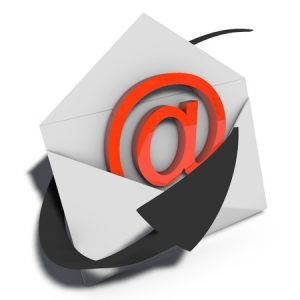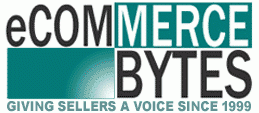 Over a generation has passed since the first email zipped along from sender to receiver. The medium persists today, useful in delivering plenty of information to its recipients. Once ecommerce arrived, email became part of online sellers’ tools for reaching customers.
Over a generation has passed since the first email zipped along from sender to receiver. The medium persists today, useful in delivering plenty of information to its recipients. Once ecommerce arrived, email became part of online sellers’ tools for reaching customers.
EcommerceBytes discussed some email marketing concepts with Kyle Henderick, Director of Client Services at Yes Lifecycle Marketing. Our essential takeaway finds plenty of life exists in this venerable marketing channel.
One needs willing recipients for effective email marketing – what can marketplace sellers do? “When compiling email lists, sellers should be actively recruiting/trying to opt-in marketplace buyers along with any additional data they can get their hands on. One of the most important things to note when developing your target audience is whether or not the content is relevant to them and the more data on hand the better,” Henderick said.
“Customers want to be in the driver’s seat choosing when, where and how they purchase so as a brand you need to have your digital storefront where they are and then bring them back home to your database. This will allow you to continue the conversation incorporating value-added information about your brand, products or industry that apply to each user is what is going to generate the most engagement and can motivate buyers to click to learn something that pertains to their interests.”
Email existed for several years as a purely plaintext medium. Once the World Wide Web arrived, making richer content available online, email followed suit. Henderick cited some email benefits, noting early methods to identify spam messages, to advanced real-time automation “around personalization and interactivity.”
Some automation works at protecting people from unwanted mail with filters. Those can catch legitimate messages and foil some email marketing. “When developing a campaign, marketers should take care to follow email marketing best practices in order to prevent their messages from being flagged by filters. Utilizing tools like preference center data, triggers and sticky content are just some of the tactics marketers can use to prevent your emails from being flagged,” Henderick said.
“Our recent study found that senders with ‘bad’ reputations and low inboxing rates at Gmail were only mailing highly inactive subscribers, were strictly sending affiliate/acquisition emails and were sending messages very infrequently.”
“Marketers must identify and remove faulty email addresses and maintain a clean customer database to overcome deliverability issues such as blacklisting, high bounce rates and lower overall engagement rates,” Henderick said.
Henderick also shared some comments about Gmail and its influence. “Gmail essentially dictates email marketing best practices as the leader of ISPs and therefore changes Gmail makes pushes marketers to adapt their content/messaging to ensure each email is engaging. Overall, the successful marketers have decreased the number of emails sent to inactive subscribers, targeting only the most active subscriber segments and implementing data hygiene best practices.”
“As a result of Gmail implementing its changes, marketers adjusted the content and cadence of their email messages. Content and cadence are both crucial to fostering customer engagement and loyalty and the marketers who failed to improve these aspects of email are not likely to make it against competitors.”
Yes Lifecycle Marketing’s study found that Gmail focuses heavily on user engagement to assess sender reputation and gauge whether an email should make it into a user’s inbox. To ensure that Gmail users are only exposed to messages they want to receive, Gmail analyzes various customer actions like:
• Opens and clicks
• How long users interact with the message
• How many users mark a message as spam
• How many users delete without opening
• How many users move a message to their spam folder and how many move it from the spam folder into their inbox
But the most impressive advances may be associated with smartphones and mobile browsing. Henderick likes “the idea and interactivity around Gmail AMP. Hopefully they’ll adopt a few of the standard practices already in place for interactivity in email to make this less of a burden on marketers. The fact that the leader of ISPs is driving this, it raises the bar for marketers to be more creative as it enables senders to build more dynamic, interactive content.”
Henderick discussed email technology further. “The most significant benefit was internet service providers adopting coding practices that apply to the web like HTML5. Since smartphones have hit the market, mobile responsive behaviors and a mobile first approach have been at the forefront of email design,” Henderick said.
“As this trend picked up, ISPs have continued to invest to ensure an optimal mobile experience can be achieved which keeps this channel relevant and has allowed marketers to innovate their programs to tailor to their subscriber’s preferences. It’s no coincidence this helped exponentially increase the user experience and why every year we see mobile audiences gain a greater share of engagement and conversion.”
Advances come with challenges, particularly to those at the start of their email marketing endeavors. “Most often, we see email marketers struggle to address shifts in consumer behaviors and truly personalize their emails to be 1:1. Despite the change in audience preferences and demanding customer base, it becomes tough for many brands to implement all of the 1:1 segmentation strategies that are needed to meet customer expectations,” Henderick said.
Henderick noted the increased level of competition for gaining the attention of readers sifting through their inboxes. “We are seeing engagement overall drop (year over year) increasing the number of inactive subscribers and the unsubscribe rate. To overcome this issue, email marketers must give subscribers a reason to continue engaging with their brand through innovative design elements or content that is personalized to their individual needs.”
“When it comes to email marketing, advertisers need to commit to taking a user-first approach in personalization while investing in content that isn’t always product centric. This starts within enhancing the user experience through mobile and interactive design best practices previously mentioned while interjecting fun,” he said.
Innovative approaches demonstrate how some brands focus on the attention issue. “Forward-thinking brands already rely on sticky content within email to strengthen their relationships with customers. For example, REI serves up geo-dynamic content that informs subscribers about hiking trails that are near their location. If geo-content isn’t available, they provide generic content that is similarly relevant to subscribers’ lives,” said Henderick.
“Every email needs to be designed in a way that encourages subscriber engagement and delivers an overall seamless and engaging experience,” he said. “The most effective email marketers differentiate themselves from their competitors by taking an agile approach to their strategies and invest in testing and tweaking elements in each campaign deployed.”
Henderick emphasized the need to embrace ongoing testing. “Whether it is confirming what you believe or testing into something new, with the aggressive change in consumer behavior, every campaign should have a percent of the audience dedicated to testing a new idea or re-confirming an old one. From CTA color tweaks, to offer types, to timing etc. there are plenty of innovative ideas that can fuel future program growth.”
“Effective email marketers fail fast, learn a lot and course correct to drive innovation in their program,” he said.



I’m really, really old school. Text only. 90 percent of all email directly to trash. Friends, Family, and identifiable business, only email read. Haven’t clicked on a link or downloaded a image from any email except for very limited friends and family (after careful scrutiny) in over 20 years.
Actually email goes back a bit more than 40 years…
Agree with Tom – email dates back to the early ’70s at least. So more like 50 years old.
The protocols for modern email was developed by ARPANET (the basis of the internet) in 1973. They were not used all around until the mid to later ’70’s. ARPANET developed the TCP/IP that is the basis for everything on the internet but packets really did not come into play until the early ’80’s. That was when I first used email but it was again to a limited number of people in your network. By the mid ’80’s the networks had expanded and they could talk to each other as long as you were using an ISP (I had Compuserve) that used the basic TCP/IP protocols which most were using and you could send packets. By the early ’90’s ISP’s had expanded to the likes of AOL which started to commercialize everything and everything just exploded from there.
Any computer from the early ’60’s on that was tied into a network could message each other which were the very first form of an email.